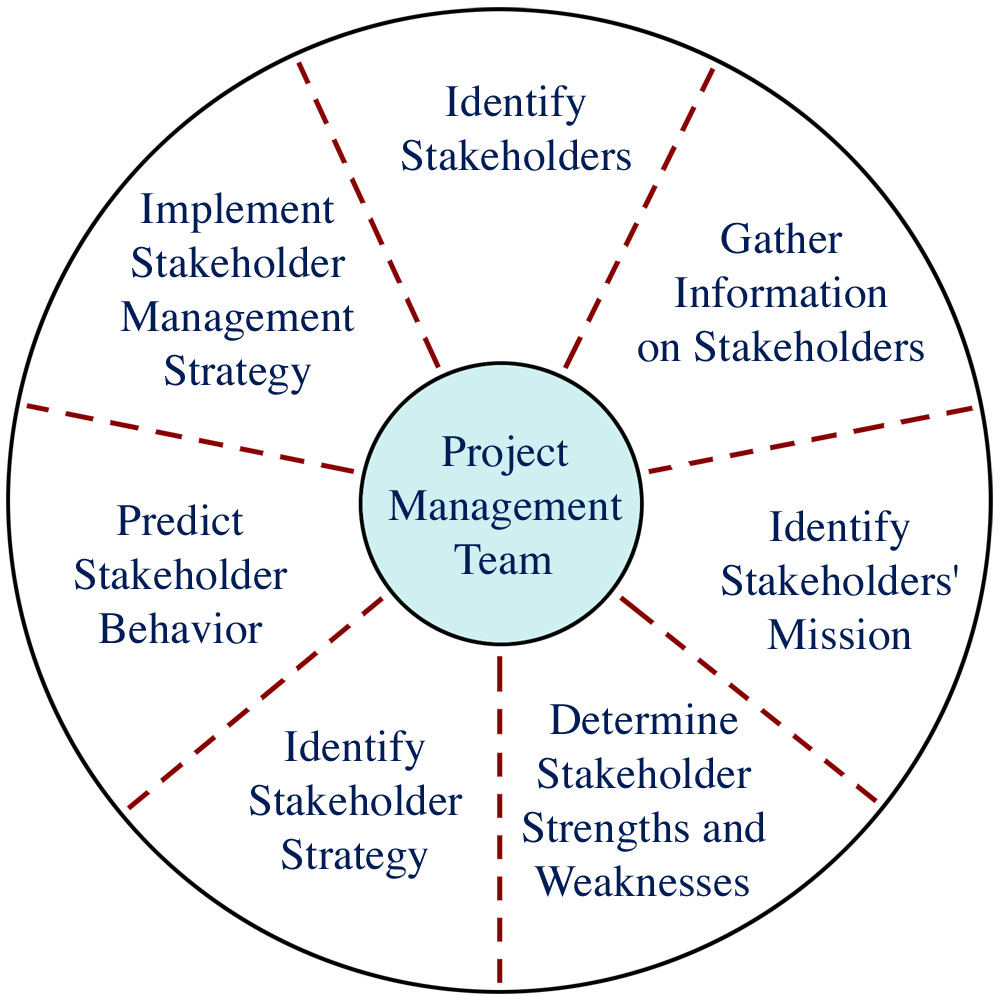Managing Stakeholder Groups--Stakeholder Management Cycle
When done well, these six steps are an important method for acknowledging the role that stakeholders play in successful project implementation. They allow project managers to approach "political stakeholder management" much as they would any other form of problem solving, recognizing it as a multivariate problem as various stakeholders interact with the project and with each other. Solutions to political management, once this methodology is used, are often richer, more comprehensive, and more accurate in their assessment of both the project stakeholders and the project manager's own capabilities.
 |
Figure
2.4 Project Stakeholder Management Cycle |
An alternative, simplified stakeholder management process consists of planning, organizing, directing, motivating, and controlling the resources necessary to deal with the various internal and external stakeholder groups. Figure 2.4 shows the model as suggested by Cleland (1988) that illustrates the nature of the management process within the framework of stakeholder analysis and management. Cleland notes that these various stakeholder management functions are interlocked and repetitive; that is, this cycle is recurring. As we identify and adapt to stakeholder threats, we develop plans to better manage the challenges they pose. In the process of developing and implementing these plans, we are likely to uncover new stakeholders whose demands must also be considered. Further, as the environment changes or as the project enters a new stage of its life cycle, we may be required to cycle through the stakeholder management model again to verify that our old management strategies are still effective. If, on the other hand, we deem that new circumstances make it necessary to alter those strategies, project managers must work through this stakeholder management model anew to update the relevant information.
